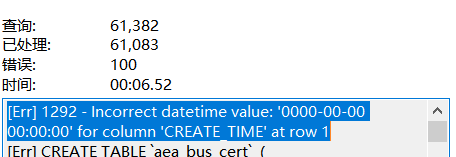[toc]
spring 代理的创建
spring 中创建代理使用了 Jdk 和 Cglib 两种方式创建,JdkDynamicAopProxy 和 ObjenesisCglibAopProxy,通过使用配置 Advised 和 ProxyConfig来管理配置,根据配置决定使用哪种方式创建代理,下面来介绍这几个关键的类。
Advised
Advised 是一个管理 AOP 代理工厂配置的接口,在spring中的所有AopProxy都可以转换为 Advised。
ProxyConfig
在 spring 中,使用 ProxyConfig 来配置代理创建属性。
/**
* 代理工厂的超类,用于统一管理代理工厂类的属性。
*/
public class ProxyConfig implements Serializable {
// true:使用子类代理,false:使用接口代理
private boolean proxyTargetClass = false;
// 启动代理优化
private boolean optimize = false;
// 使用该代理工长创建的代理是否可以转换为 Advised,默认为false:表示可以,
// 如果为false,可以将bean转换为Advised:Advised testBean = (Advised) context.getBean("testBean");
boolean opaque = false;
// 将代理暴露出去,绑定到 ThreadLocal 的 currentProxy,用于代理类自己的方法调用自己的场景。
boolean exposeProxy = false;
// 冻结配置,true:不能修改该代理工长的配置。
private boolean frozen = false;
}实现了ProxyConfig 的直接子类有4个:
ScopedProxyFactoryBean、ProxyProcessorSupport、AbstractSingletonProxyFactoryBean、AdvisedSupport,这几个类使用不同的方式来创建代理,但是最后还是会将创建代理的工作委托给 ProxyFactory,下面来查看4个直接子类的相关代码。
ScopedProxyFactoryBean:用于@Scope 注解,实现bean的作用域控制。他实现了BeanFactory、BeanFactoryAware接口,具有创建、管理bean的能力。这个类生成的代理只会记录类的名称,然后根据作用域获取bean,如果是prototype的,则beanFactory会创建一个新的bean。
public class ScopedProxyFactoryBean extends ProxyConfig implements FactoryBean<Object>, BeanFactoryAware, AopInfrastructureBean{ // 使用它来管理bean的作用域,他的实现很简答,就是获取对象时,委托给 beanFactory,然后 beanFactory 根据作用域获取对应的bean。 private final SimpleBeanTargetSource scopedTargetSource = new SimpleBeanTargetSource(); @Override public void setBeanFactory(BeanFactory beanFactory) { if (!(beanFactory instanceof ConfigurableBeanFactory)) { throw new IllegalStateException("Not running in a ConfigurableBeanFactory: " + beanFactory); } ConfigurableBeanFactory cbf = (ConfigurableBeanFactory) beanFactory; // 将beanFactory 与 scopedTargetSource 关联,获取代理目标类时,从 scopedTargetSource 中获取, // SimpleBeanTargetSource 将获取bean的操作委托给了beanFactory this.scopedTargetSource.setBeanFactory(beanFactory); ProxyFactory pf = new ProxyFactory(); pf.copyFrom(this); pf.setTargetSource(this.scopedTargetSource); Assert.notNull(this.targetBeanName, "Property 'targetBeanName' is required"); Class<?> beanType = beanFactory.getType(this.targetBeanName); if (beanType == null) { throw new IllegalStateException("Cannot create scoped proxy for bean '" + this.targetBeanName + "': Target type could not be determined at the time of proxy creation."); } // 使用接口代理 if (!isProxyTargetClass() || beanType.isInterface() || Modifier.isPrivate(beanType.getModifiers())) { pf.setInterfaces(ClassUtils.getAllInterfacesForClass(beanType, cbf.getBeanClassLoader())); } // 简单的代理增强,在调用代理类时,从 beanFactory 中获取bean进行调用,这样就做到作用域的控制了。 ScopedObject scopedObject = new DefaultScopedObject(cbf, this.scopedTargetSource.getTargetBeanName()); pf.addAdvice(new DelegatingIntroductionInterceptor(scopedObject)); // 标记代理需要不需要被AOP拦截,及时有切入点匹配 pf.addInterface(AopInfrastructureBean.class); // 创建代理对像:将创建代理交给 ProxyFactory this.proxy = pf.getProxy(cbf.getBeanClassLoader()); } }
ProxyProcessorSupport:为ProxyFactory提供了常用的公共方法。
public class ProxyProcessorSupport extends ProxyConfig implements Ordered, BeanClassLoaderAware, AopInfrastructureBean {
/**
* 可以自定义排序
*/
public void setOrder(int order) { this.order = order; }
@Override
public int getOrder() { return this.order; }
/**
* 当实现了接口时,使用接口代理,没有实现接口则使用类代理。
*/
protected void evaluateProxyInterfaces(Class<?> beanClass, ProxyFactory proxyFactory) {
Class<?>[] targetInterfaces = ClassUtils.getAllInterfacesForClass(beanClass, getProxyClassLoader());
boolean hasReasonableProxyInterface = false;
for (Class<?> ifc : targetInterfaces) {
if (!isConfigurationCallbackInterface(ifc) && !isInternalLanguageInterface(ifc) &&
ifc.getMethods().length > 0) {
hasReasonableProxyInterface = true;
break;
}
}
if (hasReasonableProxyInterface) {
for (Class<?> ifc : targetInterfaces) {
proxyFactory.addInterface(ifc);
}
}
else {
proxyFactory.setProxyTargetClass(true);
}
}
}AbstractSingletonProxyFactoryBean: 创建单例代理对象,在需要代理的对象实例化后,使用InitializingBean#afterPropertiesSet()来创建代理,并为其设置前置通知和后置通知。public abstract class AbstractSingletonProxyFactoryBean extends ProxyConfig implements FactoryBean<Object>, BeanClassLoaderAware, InitializingBean { // 代理目标对象 private Object target; // 需要代理的接口 private Class<?>[] proxyInterfaces; // 前置拦截器 private Object[] preInterceptors; // 后置拦截器 private Object[] postInterceptors; // 全局 Advisor 注册器 private AdvisorAdapterRegistry advisorAdapterRegistry = GlobalAdvisorAdapterRegistry.getInstance(); // 类加载器 private transient ClassLoader proxyClassLoader; // 代理对象 private Object proxy; // 实例化之后调用 @Override public void afterPropertiesSet() { // .... // 将代理创建工作委托给 ProxyFactory ProxyFactory proxyFactory = new ProxyFactory(); // 将预处理器、主处理器、后置处理器按顺序添加,可以组成一个处理器链根据添加顺序来执行所有的处理器。 // 添加预处理器 if (this.preInterceptors != null) { for (Object interceptor : this.preInterceptors) { proxyFactory.addAdvisor(this.advisorAdapterRegistry.wrap(interceptor)); } } // 添加主要的处理器,交给子类实现 proxyFactory.addAdvisor(this.advisorAdapterRegistry.wrap(createMainInterceptor())); // 添加后置处理器 if (this.postInterceptors != null) { for (Object interceptor : this.postInterceptors) { proxyFactory.addAdvisor(this.advisorAdapterRegistry.wrap(interceptor)); } } // 复制属性 proxyFactory.copyFrom(this); // 创建代理目标源:默认是 SingletonTargetSource TargetSource targetSource = createTargetSource(this.target); proxyFactory.setTargetSource(targetSource); // 设置代理的接口 if (this.proxyInterfaces != null) { proxyFactory.setInterfaces(this.proxyInterfaces); } // 如果没有使用类代理的方式,解析目标类的接口。 else if (!isProxyTargetClass()) { // Rely on AOP infrastructure to tell us what interfaces to proxy. Class<?> targetClass = targetSource.getTargetClass(); if (targetClass != null) { proxyFactory.setInterfaces(ClassUtils.getAllInterfacesForClass(targetClass, this.proxyClassLoader)); } } // 代理工厂后置处理方法,由子类实现,更改代理配置 postProcessProxyFactory(proxyFactory); // 创建代理对象,委托给了 ProxyFactory this.proxy = proxyFactory.getProxy(this.proxyClassLoader); } }
AdvisedSupport:实现了Advised,将ProxyConfig与Advised进行适配,为Advised提供了支持,他的唯一子类ProxyCreatorSupport为创建代理提供了支持。public class AdvisedSupport extends ProxyConfig implements Advised { // 空代理对象 public static final TargetSource EMPTY_TARGET_SOURCE = EmptyTargetSource.INSTANCE; // 代理目标源:默认为空目标源 TargetSource targetSource = EMPTY_TARGET_SOURCE; // 是否已经对Advisors进行了过虑 private boolean preFiltered = false; // Advisor 调用链工长 AdvisorChainFactory advisorChainFactory = new DefaultAdvisorChainFactory(); // 缓存方法对应的 Advisor 调用链。 private transient Map<MethodCacheKey, List<Object>> methodCache; // 要实现的代理接口,按顺序存储。 private List<Class<?>> interfaces = new ArrayList<>(); // Advisor 列表 private List<Advisor> advisors = new ArrayList<>(); // Advisor 数据,为了方便内部操作。 private Advisor[] advisorArray = new Advisor[0]; }
ProxyCreatorSupport 为创建代理提供了支持,他使用了AopProxyFactory 来创建AopProxy,最后ProxyFactory使用 AopProxy来创建代理对象。
在创建ProxyCreatorSupport 时默认创建 DefaultAopProxyFactory,由他来判断使用接口代理还是子类代理。
public class ProxyCreatorSupport extends AdvisedSupport {
private AopProxyFactory aopProxyFactory;
private final List<AdvisedSupportListener> listeners = new LinkedList<>();
// 在创建第一个代理后将置为true,表示进入活动状态,将会触发 listeners。
private boolean active = false;
/**
* 无参构造器,将会创建一个默认的aopProxyFactory。
* DefaultAopProxyFactory 是一个创建代理的工长,用于根据配置创建代理。
*/
public ProxyCreatorSupport() {
this.aopProxyFactory = new DefaultAopProxyFactory();
}
// 创建AOP代理,根据自身的配置属性觉得使用JDK代理还是Cglib代理。
protected final synchronized AopProxy createAopProxy() {
if (!this.active) {
activate();
}
return getAopProxyFactory().createAopProxy(this);
}
} 上面提到使用 DefaultAopProxyFactory 来决定使用 jdk代理还是 Cglib代理,他通过接收一个 AdvisedSupport
// AopProxy 工厂
public class DefaultAopProxyFactory implements AopProxyFactory, Serializable {
@Override
public AopProxy createAopProxy(AdvisedSupport config) throws AopConfigException {
// 启用优化或使用子类代理、没有实现接口,就会使用子类代理方式。
if (config.isOptimize() || config.isProxyTargetClass() || hasNoUserSuppliedProxyInterfaces(config)) {
Class<?> targetClass = config.getTargetClass();
if (targetClass == null) {
throw new AopConfigException("TargetSource cannot determine target class: " +
"Either an interface or a target is required for proxy creation.");
}
// 代理目标是接口,或者也是一个代理对象,使用jdk代理,否则使用Cglib 代理
if (targetClass.isInterface() || Proxy.isProxyClass(targetClass)) {
return new JdkDynamicAopProxy(config);
}
return new ObjenesisCglibAopProxy(config);
}
// 使用接口代理:JDK代理
else {
return new JdkDynamicAopProxy(config);
}
}
}ProxyFactory 是ProxyCreatorSupport 的子类,通过调用父类的方法获取AopProxy来创建目标代理对象。
public class ProxyFactory extends ProxyCreatorSupport {
public Object getProxy() {
// 掉用 `ProxyCreatorSupport#createAopProxy` 方法之后根据配置来判断使用 JDK生成代理还是 Cglib生成代理
return createAopProxy().getProxy();
}
// 与上面的方法区别在于传入了类加载器
public Object getProxy(@Nullable ClassLoader classLoader) {
return createAopProxy().getProxy(classLoader);
}
}JdkDynamicAopProxy
final class JdkDynamicAopProxy implements AopProxy, InvocationHandler, Serializable {
/** 代理配置. */
private final AdvisedSupport advised;
/**
* 代理的接口上是否定义了equals方法
*/
private boolean equalsDefined;
/**
* 代理的接口是否定义了hashCode 方法
*/
private boolean hashCodeDefined;
public JdkDynamicAopProxy(AdvisedSupport config) throws AopConfigException {
Assert.notNull(config, "AdvisedSupport must not be null");
// 通知不为空,并且目标源不为空。
if (config.getAdvisors().length == 0 && config.getTargetSource() == AdvisedSupport.EMPTY_TARGET_SOURCE) {
throw new AopConfigException("No advisors and no TargetSource specified");
}
this.advised = config;
}
// 创建代理
@Override
public Object getProxy() {
// 传入默认类加载器
return getProxy(ClassUtils.getDefaultClassLoader());
}
@Override
public Object getProxy(@Nullable ClassLoader classLoader) {
if (logger.isTraceEnabled()) {
logger.trace("Creating JDK dynamic proxy: " + this.advised.getTargetSource());
}
// 获取代理目标类的所有接口
Class<?>[] proxiedInterfaces = AopProxyUtils.completeProxiedInterfaces(this.advised, true);
// 检查接口是否实现了equals 和 hashCode 方法
findDefinedEqualsAndHashCodeMethods(proxiedInterfaces);
// 创建代理对象,这里传入了this对象,因为 JdkDynamicAopProxy 实现了 InvocationHandler,使用这一段代理逻辑进行代理
return Proxy.newProxyInstance(classLoader, proxiedInterfaces, this);
}
/**
* aop代理使用jdk代理将执行的逻辑
*/
@Override
@Nullable
public Object invoke(Object proxy, Method method, Object[] args) throws Throwable {
Object oldProxy = null;
boolean setProxyContext = false;
TargetSource targetSource = this.advised.targetSource;
Object target = null;
try {
// 执行equals方法时,接口未定义 equals 方法 ,执行JdkDynamicAopProxy 的 equals 方法
if (!this.equalsDefined && AopUtils.isEqualsMethod(method)) {
return equals(args[0]);
}
// 执行 hashCode 方法时,接口未定义 hashCode 方法,执行JdkDynamicAopProxy的hashCode方法
else if (!this.hashCodeDefined && AopUtils.isHashCodeMethod(method)) {
return hashCode();
}
//
else if (method.getDeclaringClass() == DecoratingProxy.class) {
return AopProxyUtils.ultimateTargetClass(this.advised);
}
// 能够转换为Advised,将转换为Advised,然后执行
else if (!this.advised.opaque && method.getDeclaringClass().isInterface() &&
method.getDeclaringClass().isAssignableFrom(Advised.class)) {
return AopUtils.invokeJoinpointUsingReflection(this.advised, method, args);
}
Object retVal;
// 是否暴露当前的代理,绑定到ThreadLocal中,
if (this.advised.exposeProxy) {
oldProxy = AopContext.setCurrentProxy(proxy);
setProxyContext = true;
}
// 获取目标对象
target = targetSource.getTarget();
Class<?> targetClass = (target != null ? target.getClass() : null);
// 根据代理目标对象和方法获取切入点、方法拦截器等。
List<Object> chain = this.advised.getInterceptorsAndDynamicInterceptionAdvice(method, targetClass);
// 如果与该方法匹配的拦截器或通知为空,则进行直接调用,避免创建MethodInvocation
if (chain.isEmpty()) {
// 找到方法
Object[] argsToUse = AopProxyUtils.adaptArgumentsIfNecessary(method, args);
// 直接调用原始对象方法
retVal = AopUtils.invokeJoinpointUsingReflection(target, method, argsToUse);
}
else {
// 调用 切入点、方法拦截器,目标类
MethodInvocation invocation =
new ReflectiveMethodInvocation(proxy, target, method, args, targetClass, chain);
retVal = invocation.proceed();
}
//
Class<?> returnType = method.getReturnType();
// 如果返回值是目标对象,并且代理对象是返回值类型的一个实例,则将返回值替换为代理对象
// 方法的声明类未实现 RawTargetAccess
if (retVal != null && retVal == target &&
returnType != Object.class && returnType.isInstance(proxy) &&
!RawTargetAccess.class.isAssignableFrom(method.getDeclaringClass())) {
retVal = proxy;
}
// 如果返回值类型时基础数据类型,并且为null。
else if (retVal == null && returnType != Void.TYPE && returnType.isPrimitive()) {
throw new AopInvocationException(
"Null return value from advice does not match primitive return type for: " + method);
}
return retVal;
}
finally {
if (target != null && !targetSource.isStatic()) {
targetSource.releaseTarget(target);
}
if (setProxyContext) {
AopContext.setCurrentProxy(oldProxy);
}
}
}
}在 JdkDynamicAopProxy 中,有2处关键代码,1是获取代理目标的接口,2是执行切入点、拦截器。
AopProxyUtils#completeProxiedInterfaces()方法获取代理目标的接口,按照规则添加一部分接口SpringProxy、Advised、DecoratingProxy。
// AopProxyUtils
static Class<?>[] completeProxiedInterfaces(AdvisedSupport advised, boolean decoratingProxy) {
// 获取目标类实现的接口接口
Class<?>[] specifiedInterfaces = advised.getProxiedInterfaces();
// 目标类的接口为空
if (specifiedInterfaces.length == 0) {
// 获取代理目标class
Class<?> targetClass = advised.getTargetClass();
if (targetClass != null) {
// 判断目标类型是否是接口
if (targetClass.isInterface()) {
advised.setInterfaces(targetClass);
}
// 代理目标类型是代理
else if (Proxy.isProxyClass(targetClass)) {
advised.setInterfaces(targetClass.getInterfaces());
}
// 重新获取代理对象的接口集
specifiedInterfaces = advised.getProxiedInterfaces();
}
}
// 如果目标类未实现 SpringProxy 接口,将添加 SpringProxy 到接口集中。
boolean addSpringProxy = !advised.isInterfaceProxied(SpringProxy.class);
// 目标类能转换为Advised,并且未实现 Advised 接口,则添加 Advised 到接口集中
boolean addAdvised = !advised.isOpaque() && !advised.isInterfaceProxied(Advised.class);
// decoratingProxy 为true,且目标类未实现 DecoratingProxy 接口,将 DecoratingProxy 添加进接口集中
boolean addDecoratingProxy = (decoratingProxy && !advised.isInterfaceProxied(DecoratingProxy.class));
// 划分接口数组长度
int nonUserIfcCount = 0;
if (addSpringProxy) {
nonUserIfcCount++;
}
if (addAdvised) {
nonUserIfcCount++;
}
if (addDecoratingProxy) {
nonUserIfcCount++;
}
Class<?>[] proxiedInterfaces = new Class<?>[specifiedInterfaces.length + nonUserIfcCount];
// 拷贝
System.arraycopy(specifiedInterfaces, 0, proxiedInterfaces, 0, specifiedInterfaces.length);
// 将接口class设置进对应的数组位置
int index = specifiedInterfaces.length;
if (addSpringProxy) {
proxiedInterfaces[index] = SpringProxy.class;
index++;
}
if (addAdvised) {
proxiedInterfaces[index] = Advised.class;
index++;
}
if (addDecoratingProxy) {
proxiedInterfaces[index] = DecoratingProxy.class;
}
// 返回需要代理的接口集。
return proxiedInterfaces;
} 执行切面和方法拦截器逻辑
ReflectiveMethodInvocation#proceedpublic class ReflectiveMethodInvocation implements ProxyMethodInvocation, Cloneable { public Object proceed() throws Throwable { // 执行完后通知或拦截器后,将执行业务方法 if (this.currentInterceptorIndex == this.interceptorsAndDynamicMethodMatchers.size() - 1) { return invokeJoinpoint(); } // 获取通知或拦截器 Object interceptorOrInterceptionAdvice = this.interceptorsAndDynamicMethodMatchers.get(++this.currentInterceptorIndex); // 通知或拦截器是 InterceptorAndDynamicMethodMatcher // InterceptorAndDynamicMethodMatcher 用于将方法匹配器与拦截器结合,如果方法匹配器匹配了就是用拦截器进行调用 if (interceptorOrInterceptionAdvice instanceof InterceptorAndDynamicMethodMatcher) { InterceptorAndDynamicMethodMatcher dm = (InterceptorAndDynamicMethodMatcher) interceptorOrInterceptionAdvice; Class<?> targetClass = (this.targetClass != null ? this.targetClass : this.method.getDeclaringClass()); if (dm.methodMatcher.matches(this.method, targetClass, this.arguments)) { return dm.interceptor.invoke(this); } else { // 匹配失败,调用下一个匹配的拦截器 return proceed(); } } // 调用其他拦截器,其他拦截器需要调用,因为传入了this,拦截器链可以使用引用调用本方法,以执行下一个切面或拦截器。 else { return ((MethodInterceptor) interceptorOrInterceptionAdvice).invoke(this); } } }









